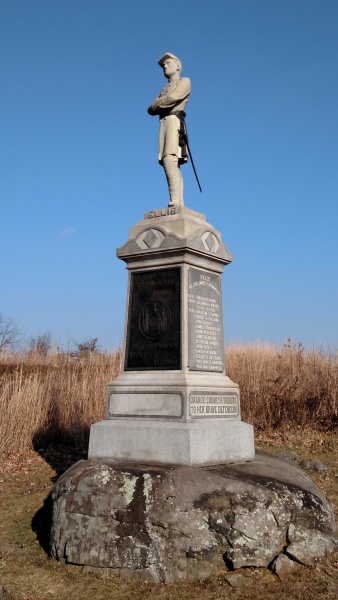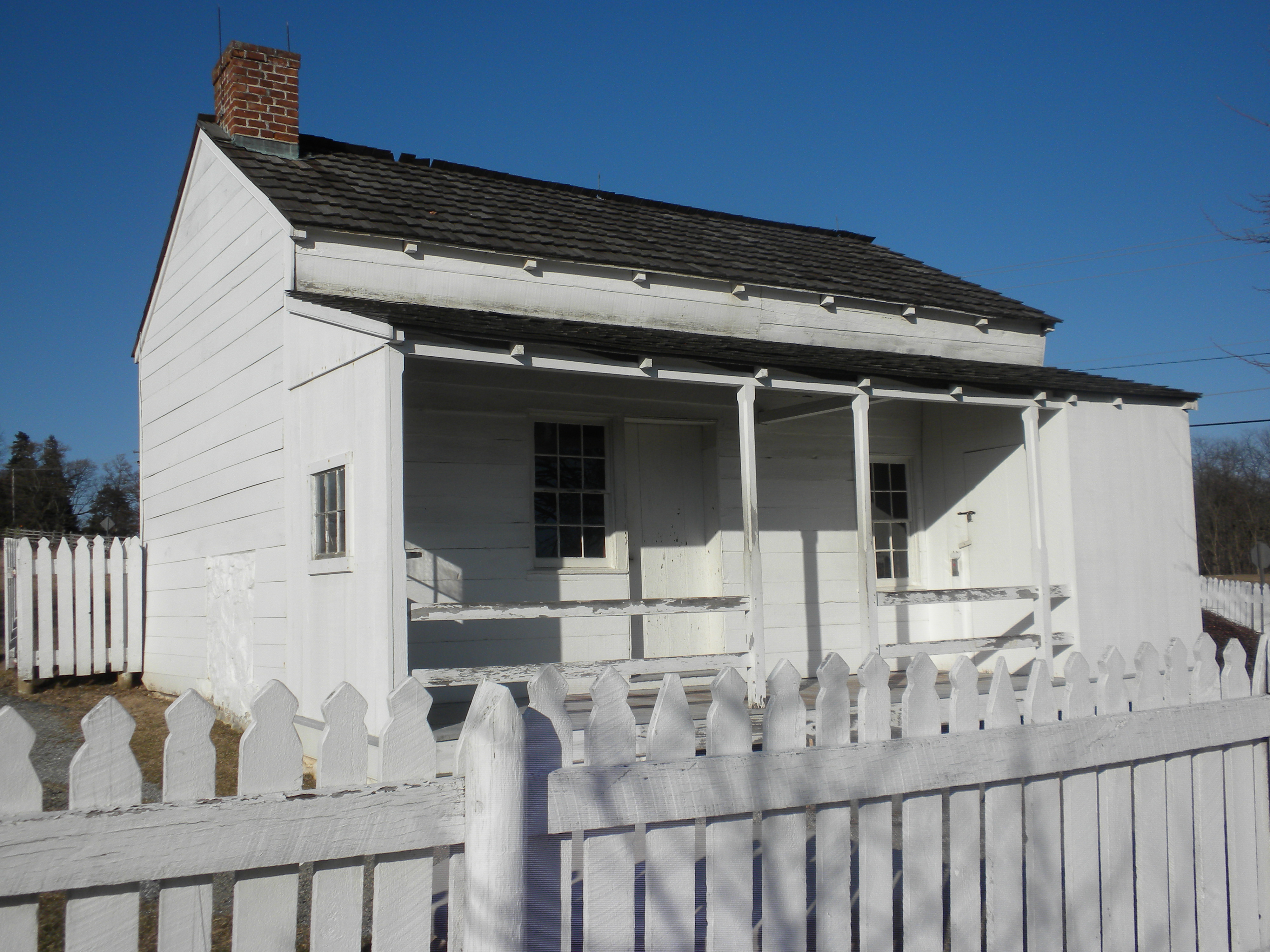I’ve known James L. McLean, Jr. for twenty or so years, ever since I met him when he was the bookseller at a Civil War conference I attended. You may know Jim as the owner of Butternut and Blue, which reprinted so many fine Civil War titles with superior quality. I was really glad to hear that Savas Beatie was publishing a new edition of Cutler’s Brigade at Gettysburg. Jim recently sat down and answered a few questions about himself, his book, his writing and research, and his future plans.
BR: Can you tell us a little bit about yourself?
JM: I have had a life-long interest in early American history, especially the Civil War era.
I graduated from Towson State College (now Towson University) with majors in history and education as well as a minor in mathematics. I taught mathematics for 30 years, covering courses from remedial arithmetic to calculus. Concurrently, my wife and I operated a new and out-of-print Civil War book business, Butternut and Blue, from 1983-2016.
My first edition of Cutler’s Brigade at Gettysburg came out in 1987, followed by a revised edition in 1994. I have had two articles published: “The First Union Shot at Gettysburg” appeared in the spring 1980 issue of the Lincoln Herald; “The Execution of John Wood on the March to Gettysburg” appeared in The Gettysburg Magazine (Issue 45, July 2011).
BR: What got you interested history in general, and the Civil War in particular?
JM: When I was seven or eight years old, my parents took me on a Gettysburg bus tour. I still remember being mesmerized by the rock formation at Devil’s Den. At an early age, I gravitated toward history books at my local library, titles such as Fletcher Pratt’s The Civil War or Earl Schenck Miers The How and Why Book of the Civil War. On subsequent trips to Gettysburg, I purchased Frederick Ray’s Gettysburg Sketches and Human Interest Stories of the Three Days’ Battle at Gettysburg by Grimm and Roy. As I got older, I received as gifts Bruce Catton’s American Heritage histories of the Civil War and Gettysburg. When I was 12, my father took me to my first Civil War Round Table meeting (the night before JFK was assassinated). My obsession with the Civil War, particularly Gettysburg, has never waned.
BR: Why Cutler’s Brigade at Gettysburg, in particular?
JM: In the 1970s, I delivered several talks to my local Round Table. Around 1978, I decided to make my next presentation about a single brigade’s performance at Gettysburg. I didn’t want to cover the obvious choices, such as the Western Iron Brigade or the Texas Brigade, so I did some digging. Sifting through my volumes of New York at Gettysburg led to my selection of Cutler’s brigade.
I gave the talk in September 1979, but I felt there was more to the story. I have pursued information about the brigade, especially concerning the 14th New York State Militia/14th Brooklyn ever since, which has now led to this third, revised edition of Cutler’s Brigade at Gettysburg.
BR: Can you briefly describe the actions of the history of the brigade and its actions at Gettysburg?
JM: The components of the brigade that Cutler commanded at Gettysburg came together slowly. At 2nd Bull Run, Abner Doubleday led the brigade, where its three regiments, the 76th and 95th New York and 56th Pennsylvania, saw their first combat. After the battle, the 7th Indiana joined the brigade. Together, the four regiments fought a night action at South Mountain. The brigade saw limited action at Antietam, Fredericksburg, and Chancellorsville.
Cutler assumed command of the brigade in early 1863. In March, the untested 147th New York was assigned to the brigade. Cutler’s final Gettysburg component, the 14th Brooklyn, was added in early June after all the two-year units it had been brigaded with were mustered out. The 14th Brooklyn became the brigade’s most experienced regiment.
On July 1, 1863, Cutler’s brigade led the 1st Corps’ march to Gettysburg where it fired the first Federal infantry shots on the battlefield. As a result of Reynolds’s orders, the brigade soon split into three distinct sections to meet the threat posed by Confederate General Heth’s division and to support Hall’s 2nd Maine battery. Cutler’s men delayed the advance of Archer’s and Davis’s Southern brigades. Then two of its regiments, in conjunction with the 6th Wisconsin, attacked the Rebels holding the railroad cut, which not only ended the morning fight but also led to the capture of a significant number of Southerners.
Despite heavy losses, Cutler’s brigade maintained its battlefield integrity, enabling it to serve along Seminary Ridge on the afternoon of July 1 and on Culp’s Hill the next two days. Cutler’s brigade was one of the few units to fight all three days of the battle, becoming one of only five brigades in the conflict to suffer in excess of 1,000 casualties.
BR: You published the most recent edition of Cutler’s Brigade at Gettysburg 29 years ago. What has happened with this work in the interim?
JM: When Ted sought permission to reprint Cutler’s Brigade, I agreed as long as I could make some changes. The result is a fuller, slightly expanded, revised edition.
When I reformatted the footnotes, I occasionally added extra analysis to emphasize points I made in the text. I not only addressed a few historical flaws but I also included several more soldier accounts that described the July 1 fighting. My ongoing research into the exploits of the 14th Brooklyn led to my discovery of daily field returns for the brigade throughout the campaign. The document, housed at the National Archives and Records Administration, specifies the number of men present for duty each day of the battle, so I incorporated those numbers for the regiments’ strengths rather than the ones I used in the second edition. The maps have been redrawn (and slightly adjusted), and three new appendices have been added. I added a postscript to explain what happened to the brigade and some of its personalities after Gettysburg campaign. Instead of a photographic supplement, the increased number of photos and illustrations has been interspersed throughout the text. Finally, this version of Cutler’s Brigade sports an attractive, full-color dust jacket featuring Allen Redwood’s painting of the 14th Brooklyn at the railroad cut.
BR: Can you describe how long it took to write the book, what the stumbling blocks were, what you discovered along the way that surprised you or went against the grain, what firmed up what you already knew? When did you know you were “done”?
JM: I started my research in 1978, so it took nearly ten years before the first volume appeared in 1987. The expanded, second edition, was published seven years later. I continue to collect source material.
As I mentioned earlier, this volume was intended to be a reprint, but I not only incorporated a fair amount of new material but I also made several revisions or clarifications to the text. When the Gettysburg portion of my 14th Brooklyn study becomes available, readers will find even greater detail concerning that regiment’s role in the battle. However, my subsequent findings confirm the conclusions I made in the three iterations of Cutler’s Brigade.
As for stumbling blocks, there are no memoirs or regimental histories for half of the units in the brigade. With the exception of J. William Hofmann, very few of Cutler’s men left published records of what they had experienced.
Three findings surprised me when I started my research 45 years ago. I soon realized that the 147th New York fought in an isolated position during the morning of July 1. Earlier accounts of the battle placed the regiment in line with the 56th Pennsylvania and 76th New York, which is understandable since their three monuments are together aligned north of the middle railroad cut. Second, I had been unaware of the important role Cutler’s men played in securing and holding Culp’s Hill. On July 2, Greene’s brigade had plenty of help defending the height. Finally, I was surprised by how dismissive many 6th Wisconsin soldiers were to the role of the 14th Brooklyn and 95th New York in capturing the railroad cut, to the point where some of them even claimed that the 14th Brooklyn never made a charge.
I don’t think my research will ever be “done” —I continue to look for information that will enhance or alter my views of what happened on the morning of July 1 at Gettysburg, especially the part played by the 14th Brooklyn.
BR: Can you describe your research and writing process? What online and brick and mortar sources did you rely on most?
JM: When I started this project in 1978, I relied heavily on the following: the MOLLUS Civil War Library and Museum in Philadelphia, which no longer exists; the War College Library in Carlisle, which became the U. S. Army Military History Institute (USAMHI) before changing its name to the United States Army Heritage and Education Center (USAHEC). Since then, I have personally worked at the New York State Archives, the Museum of the Confederacy, the Library of Congress newspaper files, the Library of Virginia, and the National Archives and Records Administration. Additionally, librarians from the Brooklyn Historical Society, the Oswego Historical Society, the New York State Military Museum, the New York State Library, the New York Historical Society, the State Historical Society of Wisconsin, and the Historical Society of Pennsylvania have kindly forwarded material that I have requested.
Numerous trips to the battlefield helped me visualize and understand the accounts left by the battle’s participants.
I compose my manuscripts the old-fashioned way, with paper and pencil. After several revisions, I bang out the text on my computer.
BR: How has the book been received so far?
JM: The first two editions received favorable reviews. I hope readers will enjoy this revised and expanded Savas Beatie edition.
BR: What’s next for you?
JM: I am working on a multi-volume history of the 14th Brooklyn/14th NYSM. The first volume, already submitted to Savas Beatie, awaits its place in the company’s production schedule. It covers April 1861, when the regiment recruited to wartime strength, through the 2nd Bull Run campaign. The manuscript features 36 full-color maps as well as numerous illustrations and photographs. I am half-way through volume 2.

































Recent Comments